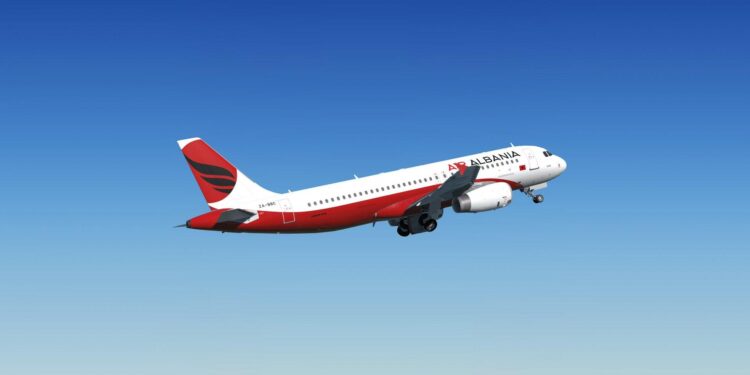Albania is accelerating its aviation expansion, positioning itself as an emerging hub in the Balkans’ travel landscape. With a series of strategic investments in airport infrastructure, increased airline partnerships, and a surge in new routes, the country aims to boost connectivity and tourism. This development not only promises to enhance Albania’s accessibility but also signals a broader commitment to fostering economic growth through aviation. As international travelers and carriers take note, Albania’s skies are becoming a focal point for growth in Southeast Europe’s travel and tourism industry.
Albania Aviation Growth Drives Increased Connectivity Across Europe
Albania’s aviation sector is experiencing a marked upswing, with expanded flight routes and increased airline partnerships significantly improving travel access throughout Europe. This surge is not only facilitating easier movement for tourists but also boosting business travel, thereby reinforcing economic ties with key European hubs. Airlines are capitalizing on the country’s strategic location by introducing a variety of new connections to major airports in Italy, Germany, France, and beyond, making Albania an increasingly vital air travel nexus in the region.
Key factors driving this momentum include:
- Infrastructure modernization: Upgrades at Tirana International Airport have enhanced capacity and efficiency, allowing more frequent flights and larger aircraft.
- Strategic airline partnerships: Collaborative efforts among local carriers and European airlines are expanding network reach.
- Competitive pricing: Lower airfares are attracting a broader demographic of travelers to and from Albania.
| Airline | New Destinations | Flight Frequency |
|---|---|---|
| Air Albania | Rome, Munich, Paris | Daily |
| Wizz Air | Budapest, Warsaw | 3 times weekly |
| Ryanair | Dublin, London Stansted | 4 times weekly |
Infrastructure Upgrades Catalyze Expansion of Albanian Airports and Air Services
The recent surge in investments towards Albania’s aviation infrastructure marks a significant turning point for the nation’s connectivity and tourism industry. Major airports including Tirana International Mother Teresa Airport, Kuk√ęs Airport, and national regional hubs have undergone extensive modernization projects designed to enhance capacity and passenger experience. These upgrades encompass the expansion of terminals, modernization of runways, and improvements in safety and navigation technologies. Such developments have not only streamlined air traffic management but also paved the way for new international routes, positioning Albania as a competitive player in the Balkan aviation market.
Key highlights of these enhancements include:
- Extended runways accommodating larger aircraft
- Upgraded baggage handling systems
- Improved passenger lounges with modern amenities
- Advanced air traffic control facilities
- Enhanced customs and immigration processes
These infrastructure investments have catalyzed an influx of new airlines launching services to and from Albania, triggering economic benefits such as:
| Impact | Details |
|---|---|
| Increased Passenger Traffic | Annual growth exceeding 15% since upgrades |
| Tourism Boost | New routes attract diverse international visitors |
| Job Creation | Expanded airport operations and airline services |
| Regional Development | Improved air connectivity stimulates business investment |
Experts Recommend Strategic Partnerships to Sustain Long-Term Aviation Development
Industry leaders emphasize that forging strategic alliances between airlines, regulatory bodies, and local governments is essential for sustaining growth in Albania’s aviation sector. By pooling resources and expertise, partners can better navigate the complexities of infrastructure development, regulatory compliance, and market expansion. These collaborations are expected to accelerate modernization efforts, improve service quality, and enhance the country’s connectivity with key European hubs.
Experts also highlight several core benefits of such partnerships, including:
- Shared investment risks that reduce the financial burden on individual entities.
- Enhanced technological exchange facilitating adoption of innovative aviation solutions.
- Coordinated marketing strategies to attract tourism and business travel.
- Improved regulatory frameworks through joint advocacy efforts.
| Partnership Type | Key Benefits | Examples |
|---|---|---|
| Public-Private | Infrastructure funding & operational efficiency | Tirana Airport modernization |
| International Airline Alliances | Network expansion & code-sharing | Collaborations with European carriers |
| Regulatory Partnerships | Policy harmonization & safety standards | Joint aviation safety programs |
Concluding Remarks
As Albania continues to broaden its aviation infrastructure and enhance connectivity, the country is poised to become an increasingly significant player in the regional travel and tourism landscape. With expanded airport capacities, new flight routes, and growing interest from international carriers, Albania’s skies are set to welcome a surge of visitors eager to explore its rich cultural heritage and natural beauty. This strategic expansion not only boosts economic prospects but also signals Albania’s commitment to establishing itself as a dynamic hub in the Balkan aviation sector. Travel and Tour World will continue to monitor these developments as Albania charts a new course in its aviation journey.
















